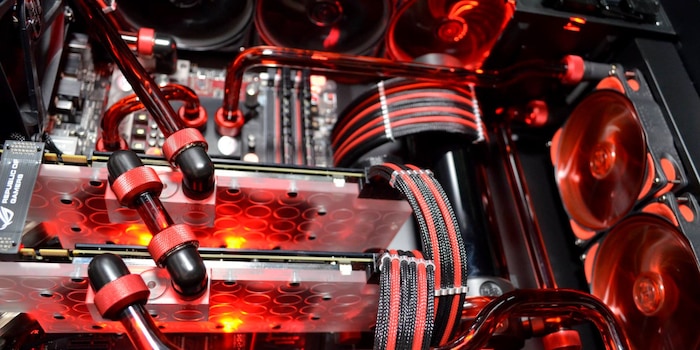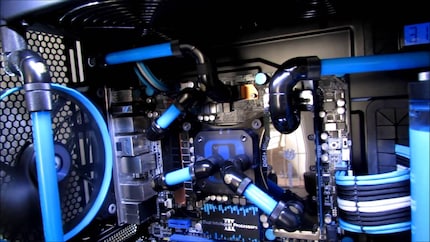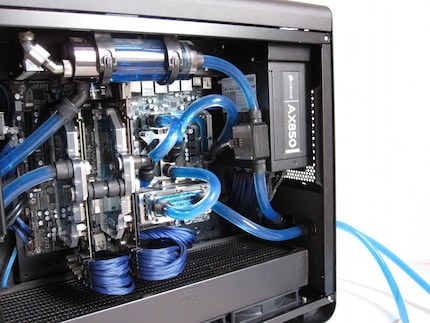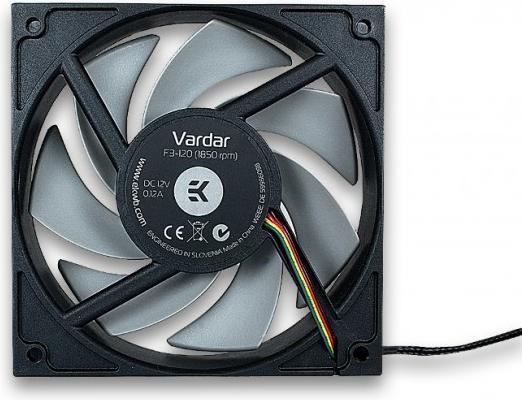

Liquid cooling: is it worth it?
Liquid cooling for PCs is becoming increasingly popular. But is it really worth it? Some say it's expensive, complicated and short-circuits at the slightest leak. Others say: fridge temperatures and virtually no noise. The horror stories go hand in hand with the praise. We explain what's really behind liquid cooling.
PC gamers are do-it-yourselfers. Instead of buying a ready-made computer, they prefer to get their hands dirty and screw and plug things in at every turn. The nec plus ultra is liquid cooling (cryogenic cooling aside ;)). What was, some time ago, a science in its own right and reserved for technophiles has become much more accessible in recent years. We may not yet have reached Playmobil level, but we can already talk about Lego Technic level. Before you flood your office, here's an overview of the most important points around liquid cooling.
How it works

Source: YouTube/OCTurboJoe
Water cooling works on the same principle as a conventional CPU or graphics card cooler: heat is transferred by direct contact with cooling fins and removed by a fan. For liquid cooling, a small cooling element through which water passes is used - so the water is not in direct contact with the processor or graphics card. The heat is absorbed and dissipated by the water. As water cooling is a closed system and not connected to a pipe, the water must also be cooled. This is done by a radiator which, like the processor cooler, has cooling fins. The heat is therefore transferred to the radiator and blown out of the casing by a fan. The radiator can also be placed outside the enclosure. If several components need to be water-cooled, the system is enlarged accordingly and the water passes through various stations, from the CPU to the RAM and the graphics card. The motherboard can also be cooled with this system.
What is needed

Source: Ventilator
The easiest way is to buy a kit. This usually consists of a pump, a radiator with a fan, a CPU cooler and tubing. Those who know their way around a little better can also buy the components separately.
How should it be installed
Without going into too much detail, you need to mount the CPU on the cooler, install the radiator and pump inside or outside the case and connect everything with the hoses. Finally, you fill the whole thing with distilled water - which is free of limescale and micro-organisms. If you want to water-cool your graphics card, you either need to buy a compatible model or screw in the available ventilation yourself and add a cooler. The same applies to RAM and the motherboard. If you want to use rigid pipes, you'll need an additional bending tool; a heat gun, for example.
Is it difficult?

Source: Deathmetalmods
Sure, you don't need an engineering degree to put together a watercooler, but it does require more tinkering than a simple CPU cooler and spreading a bit of thermal paste. Then there's regular maintenance of the system. It's advisable to check all the connections at least once a year and, at the same time, change the water.
In comparison with a traditional fan
For
- Better cooling
- Quieter
- Styled
Counter
- Expensive
- Complex installation
- Maintenance

Source: XS-PC
Certainly, liquid cooling offers better cooling, but this detail is only relevant for hardcore overclockers. Today's CPU coolers, too, come to grips with extreme heat with their huge fins. The noise argument is only partially valid, as cheap water-cooling systems often have clearly audible pumps. On top of this, liquid cooling systems cannot function completely without a fan. If you buy a top-of-the-range kit, you can look forward to a virtually silent PC. Finally, it's often a question of style: bubbling systems make a much better impression than fans. If you want to make a good impression at the next LAN party, bet on water.
With these systems, you customise your checkout
Being the game and gadget geek that I am, working at digitec and Galaxus makes me feel like a kid in a candy shop – but it does take its toll on my wallet. I enjoy tinkering with my PC in Tim Taylor fashion and talking about games on my podcast http://www.onemorelevel.ch. To satisfy my need for speed, I get on my full suspension mountain bike and set out to find some nice trails. My thirst for culture is quenched by deep conversations over a couple of cold ones at the mostly frustrating games of FC Winterthur.


